Reptile Care at Little Critters Veterinary Hospital

Reptile Care
Dr. Patt is an experienced reptile health care provider and offers a comprehensive physical examination, nutritional consultations, environmental enrichment consults and advanced diagnostics which include x-rays, blood work and fecal examination. We also are experienced at soft tissue surgery. We care for a large variety of reptiles including lizards, snakes, tortoises and turtles.
Thinking about getting a reptile for yourself or a loved one but worried about the care or possible feeding of bugs and live food? No worries, there is a reptile species for everyone. This is our pick for what we consider to be easy reptile pets. By easy we mean that their needs are minimal compared to more extreme exotics and most don’t require live food.
Please remember that all reptiles need special care and attention daily to live healthy long lives. So for our picks we looked at things such as the diet needed, the type of lighting and heating requirements and illness/malnutrition seen in our practice. Dr. Patt and her husband have owned all of these so we can speak from experience about their care and needs.
The best way to keep your reptile healthy is to catch diseases early, before your pet is showing any signs of illness. These pets are masters at hiding illness, so early intervention is critical. This is why all reptiles should have an bi-annual examination.
|
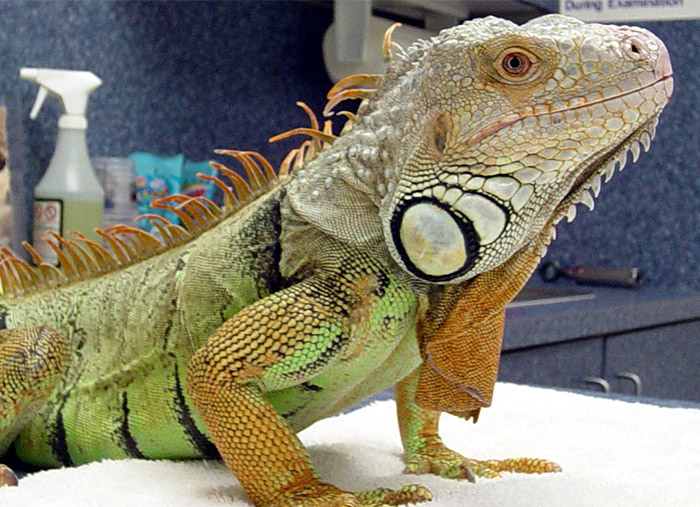
Iguanas: A common pet but one that has more special feeding and humidity needs that must be met to ensure good health. More information: Anapsid.org
|
|
During your pet’s bi-annual examination, we may also recommend additional testing. We offer full diagnostic screening such as x-rays, blood tests, fecal exams, skin scrapings and biopsy of growths. We also offer surgeries for growth removal.
We cannot stress enough that your reptile needs proper nutrition. All too often in our practice we see reptiles suffering from malnutrition and health problems caused by malnutrition. During your reptile’s bi-annual exam, we will discuss with you the proper nutrition and feeding schedule for your reptile and offer behavioral and reptile care counseling.
Reptiles Require a Higher Skill Level of Care
Little Critters Veterinary Hospital treats all types of reptiles from the most common to the very exotic but certain reptiles have very special needs demanding a higher skill level of care, so they are not recommended for the beginner. Our Easy Reptile List is our opinion on the best reptile pets for the new owner. As with any exotic animal close attention to diet and environment is always needed and education about your individual species is highly recommended.
|
Our Top 5 list for recommended Reptile Pets
|
1. Crested geckos
These are wonderful little lizards that do not require any additional heat and a simple fluorescent light will suffice. They do not get very large (about hand sized) and can become tame. Please note though that they will drop (and not regrow) their tail when stressed. The typical diet is a commercial crestie diet that has the consistency of baby food and many people keep them on only this diet with a small dish of water in the cage. We have found that they grow better and faster with supplemental bugs (crickets) as a regular part of their diet. The caging needs are simple with a space of 1ft x 2ft high for adults, some climbing branches and plants (real or fake) for hiding. The bedding should be kept moist and the cage should be misted daily. The following is a good source for crestie info and supplies – Pangea
Click for more Information on the crested gecko
Also consider Leopard Gecko here - http://www.anapsid.org/leopardgek.html
|
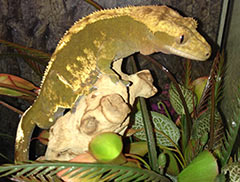
|
|
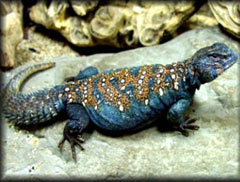
|
2. Uromastyx Lizards
Not all lizards need bugs and some don’t even need water! Yes it’s true, consider these small lizards tortoises without the shell as their care is very similar. Uros come in a large variety of colors and as adults they are bright and beautiful animals that will become very hand tame. They do require a high heat and a low moisture environment with full spectrum uvb (10.0 bulb) and a basking spot of 120 F (yes hot- not a typo). Their diet consists of only greens and we feed an assortment of spring greens daily. We keep ours on bird seed (millet) and have found this to be safe and easy to clean. The will eat some of the seeds and weekly we offer ground up lentils (place in coffee grinder). They don’t need, and shouldn’t have a water dish, in their cage as all their water is derived from their greens. At least weekly, they need a multivitamin and calcium supplement added to their greens. For more information and some beautiful photos of Uros check out Deer Fern Farms.
Click for more information on the uromastyx lizards.
|
3. Tortoises & Turtles
Tortoises come in a variety of sizes, shapes and colors but in general all are herbivores (they eat only greens) and should be feed a diet of leafy greens daily and even grass hay as adults. Favorite treats include small amounts of fruits and I’ve found that my desert tortoises love hibiscus flowers and leaves over all else. Tortoises will become very tame with their owners and live very long lives. In the desert Southwest of AZ many are kept as outdoor yard pets but this should be done with caution as we frequently see them attached by dogs and when young they can be susceptible to birds. Also if kept in an outdoor enclosure care must be ensured that they cannot dig out as many have dug out of their yards and gone for a stroll. If kept indoors they require supplemental heating and full spectrum UVB light 10.0 bulbs or mercury vapor. For specific needs please research your particular species. Some suggestions for pets include desert tortoises (available for adoption), as well as Russian and Greek tortoises commonly sold in pet stores. These guys don’t get too big and become nice pets. Sulcatas or African Spurred Tortoises are another popular pet but please realize that while they start out smaller then your hand they quickly grow to 90 lbs or more so ensure adequate housing for the adult size as many are re-homed once they reach this size due to lack of space. See tortoise care for more info and Wildside pets is worth a visit for AZ locals.
Click for more information on tortoises.
|
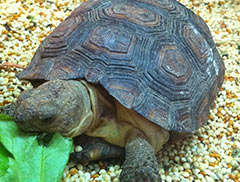
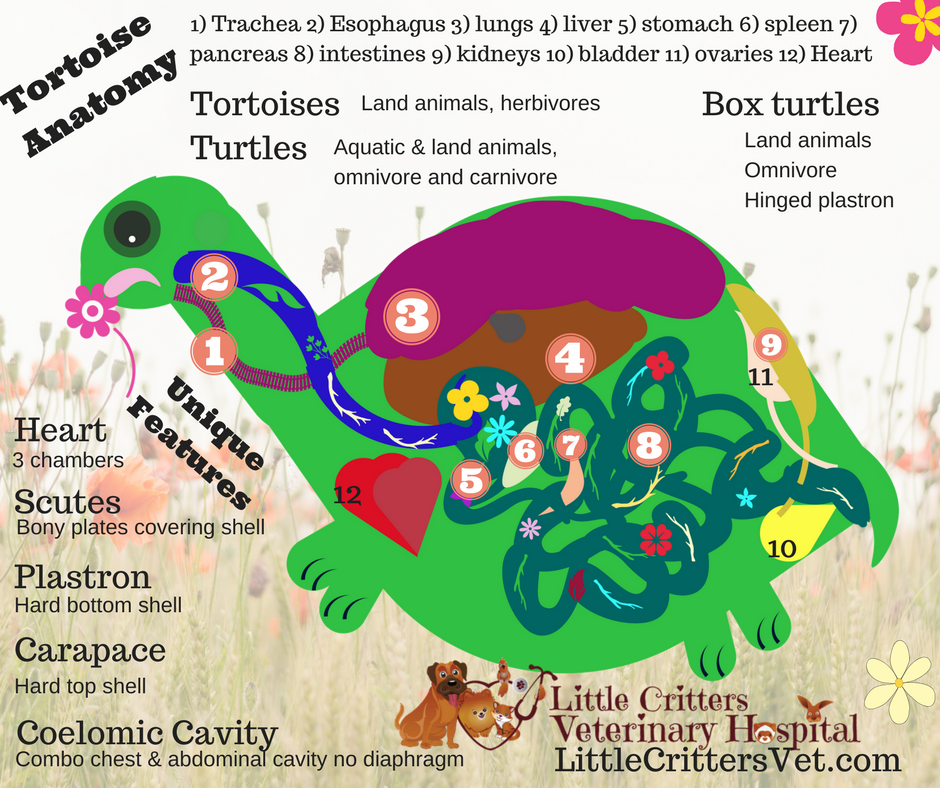
|
|
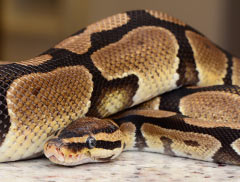
|
4. Snakes -- Yes Snakes!
Our recommendation for snake pets include:
- Ball pythons – they do not get very large and come in a wide variety of colors and patterns.
- Boas – Several types are available but the red-tail is the most common. Many color morphs are available in the pet trade. These are typically quiet and gentle snakes but will get big.
- Kingsnakes – beautiful snakes that are shiny and colorful but can be reclusive.
- Corn and Milk Snakes – smaller snakes that can become very tame and are available in many colors and patterns.
For more snake information, visit kingsnake and Ill reptile for supplies.
Snakes are actually the easiest reptile pet to care for. They do not need and should not be fed live food and only need a frozen thawed mouse about weekly (will vary with age and size of snake). Snakes do not require supplemental light and many will not need extra heating (see requirements for your species).
|
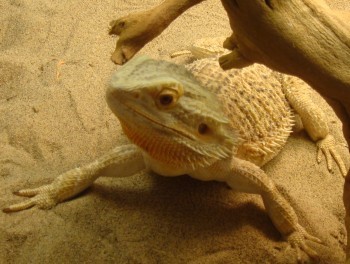 |
5. Bearded Dragons
Are omnivores: eating a mixture of plants and animal products, but the bulk of the diet is protein based. Common problems are similar as with other reptiles and include malnutrition from improper lighting and feeding. They often suffer from parasite infections and should be examined yearly. Bring a fecal sample! Hatchling bearded dragons have to be fed very small live food which sometimes can be difficult to obtain and hatchlings are more fragile. It is best to start with a slightly older dragon that can be fed readily available food.
|
A Quick Fact Sheet
ENVIRONMENT: Desert of Australia
LIFESPAN: 10+ years of age
SEXING: Males have a beard that turns black during the breeding season. Males have pre-anal and femoral pores.
HOUSING: A large aquarium with a natural substrate bottom and multiple climbing branches and hide boxes should be used. The type of substrate is often debated but may people advocate bedding such as sand, outdoor carpet, decomposed granite, paper towels, newspaper… Regardless of the type of substrate used, hygiene is the most important aspect to consider. You should choose a substrate that you can keep clean and fresh for your dragon.
AVOID: kitty litter, bird litter (such as corncob or walnut shells) and wood shavings.
LIGHTING: Full spectrum lighting can only be supplied in the form of fluorescent bulbs and the bulb must supply UVB spectrum light. The light should be 18 inches from the cage. A basking light should be provided in the form of an incandescent bulb placed above a branch.
|
|
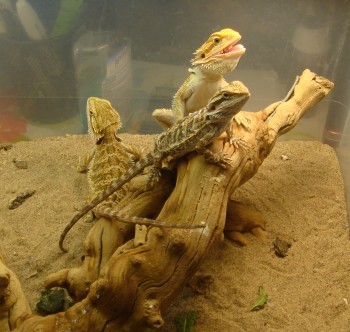
|
TEMPERATURE: A range or temperature gradient should be supplied with the cool end of the cage at 75F and the warm end up to 86F. Night time temperatures can dip down to the 70’s. The basking light should provide a focal spot in the 90’s range.
WATER/HUMIDITY: A shallow drinking dish should be provided Occasional misting with a spray bottle can be provided.
DIET: These guys are omnivores: they eat protein and veggies. Very Young: Pin head crickets must be provided, feeding these hatchlings too large an insect can result in their death. Assorted shredded veggies. Immature: larger insects – a variety should be provided.
ADULTS: As the lizards grow larger they can be fed mice or other rodents.
SUPPLEMENTS: The insects should be dusted with a phosphorus free calcium supplement prior to feeding. A multi vitamin should be provided twice weekly.
MEDICAL CONCERNS: Parasite infections are very common in bearded dragons and will often result in cloaca irritation and prolapse.
Malnutrition and metabolic bone disease due to poor lighting and diet. Gut impaction Remember: A yearly veterinary examination is needed to keep your dragon healthy.
CONCLUSION: Dragons can make excellent pets and I often recommend them to people considering purchasing a lizard. One benefit of dragons is that they don’t grow as large as iguanas and they tend not to become aggressive. But, like all exotic pets they have very special needs and the potential owner should become educated prior to purchasing these pets. Also, remember that adult dragons must be fed a larger protein source such as mice and rats. If you aren’t comfortable feeding this type of prey then a dragon is not for you.
|
|
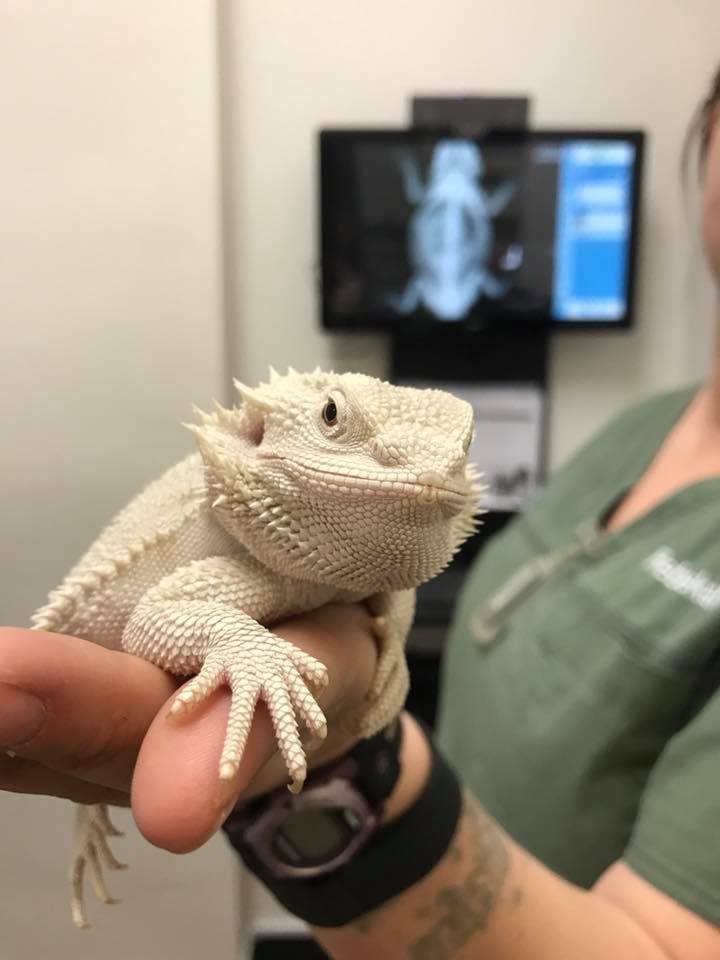
|
- Highly recommended pets.
- These are moderate sized lizards that become very tame and engaging
- Diet includes a mixture of gut-loaded insects and greens
- They are desert animals requiring UVB lighting and calcium supplementation
- recommend care guide: Bearded Dragon Care Guide
|
|